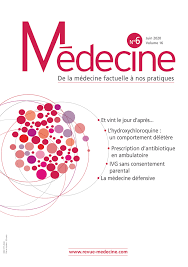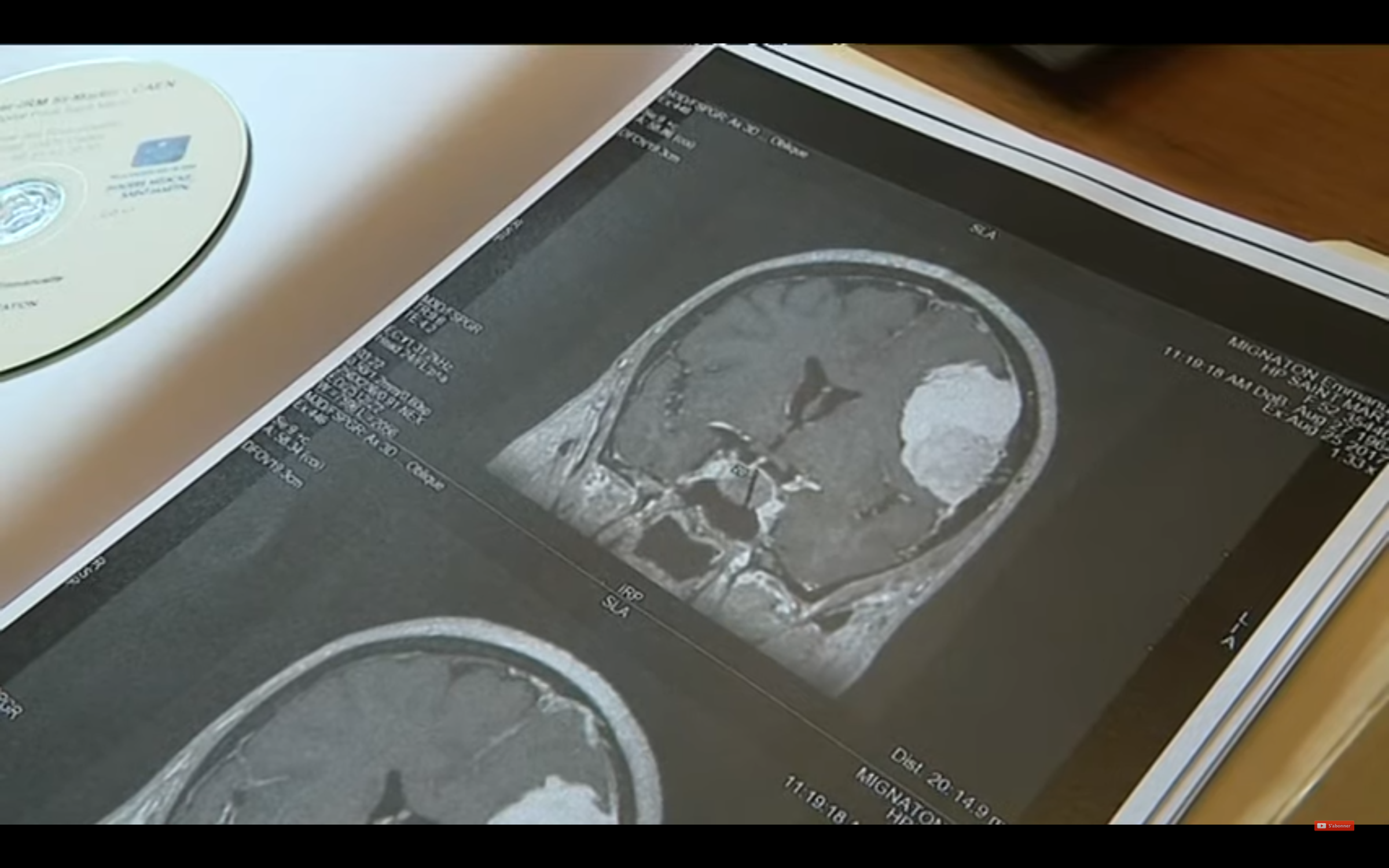Androcur: prescribers blindness
These are neurosurgeons who, the first, had the attention attracted by the occurrence of meningiomas, sometimes multiple, in patients treated for several years by high doses of cyproterone ( Androcur and generic) acetate 1 and have mentioned the possibility of a link and the responsibility of this progestogy. It was in 2008 that a Strasbourg team for the first time communicated on this subject about nine patients [1].
The testimony of Professor Froelich (Liberation of September 11) is instructive in this respect: it is when he had to take care, in a fairly short time interval, three patients with meningioma and treated by Androcur1 that the strength of the link appeared to him obvious; Especially since, for one of these inoperable patients, this neurosurgeurian observed a decrease in the size of meningioma when stopping cyproterone acetate.
A well -known undesirable effect
of neurosurgeians for ten
years
From the end of the 2000s, around thirty cases of meningiomas occurred in patients treated for several years by high doses of cyproterone acetate had been published, mainly in neurosurgery reviews.
In the 2010s, the ASM (National Agency for Medicines and Health Safety Agency) on the ASM) on several occasions on the cases present in the national pharmacovigilance database.
In 2014, the analysis of the base made it possible to identify 39 cases of meningiomas with cyproterone acetate in high doses [2]. In June 2018, 100 cases appeared in the base.
The regression, total or partial, when the incriminated medication is stopped is a strong argument in favor of the accountability of an adverse effect, even if it is necessary to be attentive to the possibility of the disappearance of a unlikely Nocebo effect with regard to the regression of a tumor. Several French neurosurgical teams have published isolated regression [3, 4] as well as a series of 12 cases [5]; 10 of these patients suffered from multiple meningiomas with an average duration of treatment of 20 years; For the other 2 patients, the average duration of treatment was 10 years; 2 of the 10 patients were operated due to a rapid drop in visual acuity. The androcur1 stop was followed by a decrease in the volume of the tumor in 11 patients and a cessation of tumor growth in a patient.
Focus
1 Cyproterone acetate is also present at a dose of 2 mg per tablet in combination with an estrogen in the following products: - Diane 351 and generics indicated in the "treatment of moderate to severe acne linked to a sensitivity to androgens (associated or not with seborrhea) and/or hirsutism, in women of procreation age". - Climene1 which has the
following indications: "Hormone substitutive treatment (HRT) of symptoms of estrogen deficit in menopausal women. Prevention of post-menopausal osteoporosis in women with
an increased risk of osteoporotic fracture and with intolerance or contraindication to the other treatments indicated in the prevention of osteoporosis ". These specialties are not
affected by the study of the CNAM
concordant cohort studies
In 2011, a cohort study, funded by the Spanish agency in charge of the drug, included 2,474 users of high -dose cyproterone acetate [6]. This study had identified 4 cases of meningiomas in these users, or 60 cases per 100,000 people-years. The authors calculated that, after adjustment for age and sex, the risk of meningioma was multiplied by more than 11 (11.4; 4.3-30.8) compared to the non-users. A cohort study of the CNAM (National Health Insurance Fund) from 2006 to 2015, of the “exposed/ non -exposed” type, included 253,777 women2. The cases were defined by a first hospitalization for meningioma with invasive act, especially neurosurgical. This risk of hospitalization was multiplied by nearly 7. The analysis shows a very strong effect dose relationship: the risk of meningioma occurrence would be multiplied by more than 20 beyond a cumulative dose of 60 g, a dose treatment of 50 mg/d 20 days per month for 5 years. In total, more than 500 cases of women's meningiomas exposed to cyproterone acetate were taken care of in neurosurgery or neurology between 2007 and 2015 ”[7].
Massive misuse
Androcur and his generics were largely prescribed AMM. Let us recall the official indications in women for tablets dosed at 50 mg: "Major female horsutisms of non-tumor origin (idiopathic, polycystic ovary syndrome), when they seriously sound on psycho-affective and social life" 3. The opinion of the Transparency Commission of June 22, 2016 reported the 2015 IMS-EPPM data: contraception is mentioned in 15 %of cases and acne in 8 %of cases; In 7 % of cases, the prescription took place during a routine gynecological examination. A number of women continued Androcur despite the occurrence of meningioma. In the CNAM cohort, 19 % of operated patients have resumed cyproterone acetate.
Regulatory measures
in 2009
The ANSM recalls that "the first European discussions (...) began in 2009, when France launched a signal on the basis of a publication of Pr Froelich highlighting an association between cyproterone acetate and the occurrence of meningiomas". Summaries of the characteristics of the product (RCP) were then modified to add as against indication "existence or history of meningiomas" and mention the fact that cases of meningiomas have been reported.
An MRI
for which patients?
The conduct to be held in patients must be debated by the French endocrinology society (SFE) and the French Society of Endocrinology and Pediatric Diabetology (SFEDP) which published, on August 31, 2018, a press release where they advise endocrinologists "to discuss with their patients treated by Androcur , to inform them of this new (sic !!) potential risk pursuit (or not) of treatment ”.
If compliance with the indications and contraindications of the AMM goes without saying, the place of possible MRI screening in asymptomatic patients and treated for several years by cyproterone acetate at 50 mg or more per day remains to be defined: after how many years of treatment? Or from which cumulative dose? The SFE "thinks legitimate, at this stage, to propose an encephalic MRI for all exhibitions of more than 5 years, and for exhibitions less than 5 years if a concern is born in a prescriber or in a patient".
2 Data from the CNAM study (not published on September 17) come from the ANSM (Reference 6 and press release from 08/27/2018) and a presentation of Dr. Alain Weill during the SFE congress on September 13.
3 The official indications of the tablets dosed at 100 mg are as follows: "Palliative anti-Androgenic treatment of prostate cancer and reduction of sexual impulses in paraphilies in combination with psychotherapeutic management".
For practice
! The association between prolonged taking of Androcur1 and occurrence of a meningioma is statistically very strong with a very clear dose-effee relationship.
CNAM study corroborates pharmacovigilance data.
! The prescription outside the AMM of Androcur (or the continuation of this treatment) engages the responsibility, including criminal, of the prescriber. The AMM wording only authorizes the prescription of Androcur1 only in a small minority of patients with hirsutism.
! Let us recall that Androcur also exposes to risks of liver damage.
! Let us hope that the health authorities finally frame the prescription effectively ( note of the association: it was actually done in June 2019, following the meetings ANSM-Médecins- Associations )
Article of the Revue Medicine October 2018- Androcur: Specifications of prescribers
Article in PDF format here





